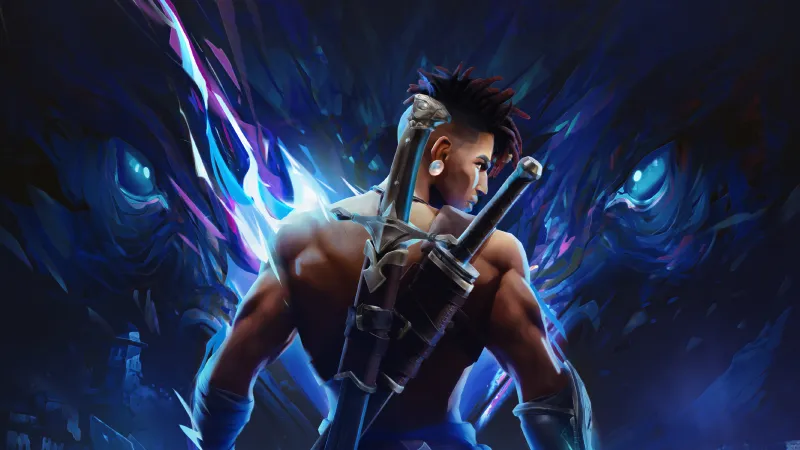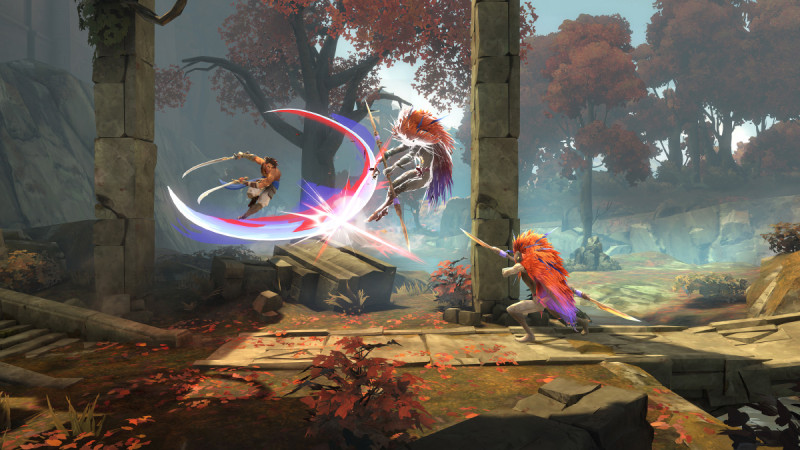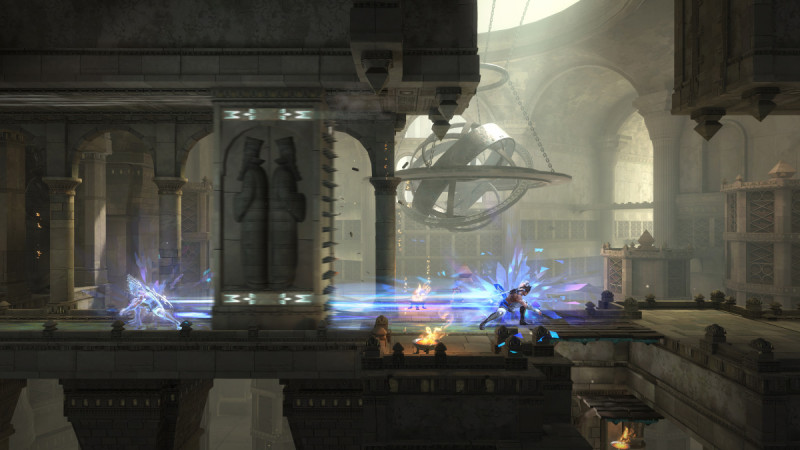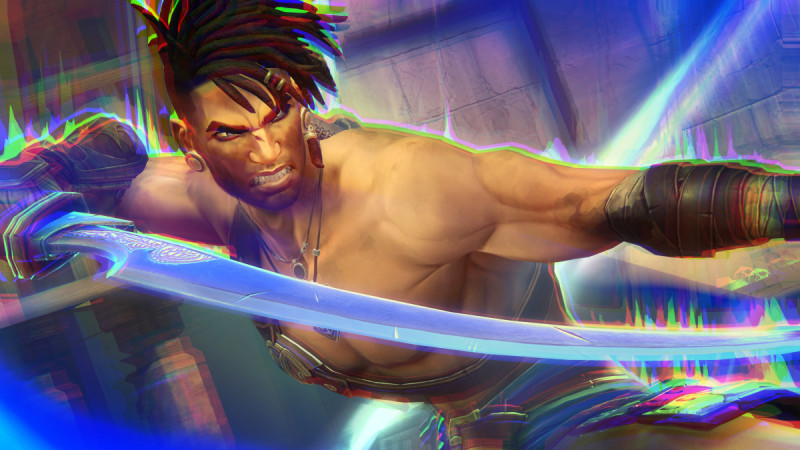
Beginning in 1989, the Prince of Persia series enjoyed consistent attention, with its longest break between releases being six years between Prince of Persia 2: The Shadow and the Flame and the better-left forgotten Prince of Persia 3D. 2003’s Sands of Time and its two sequels marked a new era for Prince and, in many ways, laid the foundation for Ubisoft’s most successful franchise, Assassin’s Creed. The 2008 Prince of Persia reboot didn’t reignite the series as Ubisoft had hoped, and 2010’s Forgotten Sands felt closer to a movie tie-in than a new, proper entry.
That game’s subtitle would end up being a portend of the future as the series seemed inexplicably lost to time. Though not completely ignored, thanks to the occasional cameo in other Ubisoft games and underplayed mobile releases, we will have gone 13 years without a new Prince of Persia game by the time The Lost Crown is released early next year. We’re well overdue for another chance to explore a Persian location with our impressive parkour skills. We may not have expected the series to go back to its 2D roots for its triumphant return, but based on our discussions with developer Ubisoft Montpellier and playing the game’s first three and a half hours, it may be precisely what we need.

The Sands of Time
“I think you should ask [Ubisoft CEO] Yves Guillemot,” says game director Mounir Radi with a laugh when I ask why we’ve had to wait so long for a new Prince of Persia. He genuinely doesn’t have an answer to the question, but his excitement at finally being able to bring the series back is evident.
The Lost Crown wasnʼt an assignment that came down on high from Ubisoft but was instead directed by the team Radi helped put together for the game.
“It’s fully us. It’s not a command,” Radi says.
The moment just happened to be right. The people Radi wanted on the team with applicable skills like expertise in platforming and world-building were finally available within Ubisoft.
“I didn’t want to do any Prince of Persia that I wouldn’t be proud of,” senior producer Abdelhak Elguess says, also citing having the right people be available at the right time be a major factor.
Once the team was assembled it took some time to decide in what direction the team wanted to go. Development began in 2019, which means pending any unforeseen delays, the game has been in development for almost five years.

“It was not 2D from the start,” Radi says. “I had the chance to work on some prototypes in 2D, but before going into it, we studied the Prince of Persia series, just to be sure we understand all the legacy.”
That effort meant researching what fans liked about Prince of Persia in all its forms. The team tried to emotionally detach itself from the franchise and focus analytically on what players might want from a new entry. Radi himself is a longtime fan of the series, predating its move to 3D movement, and hoped, specifically, to recall the tone of the original but with a contemporary lens. “I wanted to have a callback to the fear and isolation that I had when I was playing the 2D games,” he says. “And to also push a lot of experimentation with the aspect of the time powers.” That goal of isolation and fear naturally fit into the “Metroidvania” mold – a term Radi offers to describe the game without hesitation. After playing, I understand why. If you liked the structure of 2021’s Metroid Dread, then you should absolutely be paying attention to The Lost Crown.
That isnʼt to say that Prince of Persia’s excellent 3D iterations won’t have representation. Radi is quick to compliment Sands of Time, and the team is doing everything within its abilities to ensure that moving back to 2D does not feel like a regression.
Warrior Within
Previous Prince of Persia games being an influence on The Lost Crown admittedly goes without saying. To make a new Prince of Persia game without reverence to what came before would be a disservice to the longtime fans. But plenty of other games, and even entire genres, are serving as an influence for this new era of Prince of Persia, too. “Maybe you have heard that I am a big fan of fighting games?” Radi asks. “They achieve, I think, in the right way, the spectacular aspects of 2D action. I wanted to bring this to the screen.” Fighting games can scare away some, however, with their complicated inputs and focus on educating players for some time before they feel they have a grasp on the action. “I understand that when talking about certain [fighting] games it can sound like complexity, but this is not that for me,” Radi says. He cites games like Smash Bros. and Street Fighter that have a “super elegant” one attack, one function approach. “I wanted to take some aspect of the fighting games and make them much more straightforward.”
Watch 20 Minutes Of The Lost Crown Gameplay
Only speaking to Radi, I was unclear of exactly what he meant, but getting hands-on with the game, I have a much better feeling for how protagonist Sargon (who notably is not a Prince) attacks a little bit like a fighting game character. You do not perform combos with your swords by memorizing button patterns. You only use one button for sword attacks, but I was much more thoughtful about attacking enemies against walls and dashing into an attack to kick enemies into the air and bring the fight to the sky. It’s also worth noting that the combat is very fast and very fun. Counters play an essential role and Sargon makes big sweeping attacks with his dual swords that feel great. I also like the focus on positioning and sliding under enemy legs or jumping over them to get the best angle of attack instead of unlocking button patterns. It made every encounter feel seamless and thoughtful. You also build up a meter to unleash a devastating special attack that is very important to manage, especially during boss fights.
Alongside Radi’s fighting game interest comes expertise from some of the best platform designers in the industry. Much of The Lost Crown’s team worked on Rayman Origins and Legends, and the main lesson from those games the team is applying here is a sense of musicality and rhythm in platforming – though you shouldn’t expect any rhythm levels like the ones seen in Rayman Legends. “For me, and for a lot of people on the team, the action on-screen is music,” Radi says. “When you work on a game such as Rayman, you learn how to convey this aspect into gameplay.” Radi adds that when the team talks about how it wants the player to make Sargon bounce between walls or sprint through an area, it find itself gesticulating as if conducting in rhythm. Prince of Persia: The Lost Crown is quite different from Rayman, but in my time playing, I can feel the lessons learned from those games applied here.

Most Think Time Is Like A River
Typically, in preview opportunities where we get to play a game ahead of release, we’re dropped into the middle. This way, we avoid spoilers and early lengthy tutorials to, ideally, get a sense of a game when a player has already spent some time understanding how it plays. Perhaps as a show of confidence, Ubisoft let me play from the very beginning and then what felt like a significant way into the story. I won’t spoil its biggest narrative surprises, but it did not take long for its hooks to be fully planted to the point I was disappointed I had to stop. Iʼll be more than happy to replay the game’s opening hours again in January.
Before even starting, I changed the spoken language to Farsi (Persian in the game’s settings), which will be an option at the game’s launch. There are also difficulty options and Guided and Exploration modes. The former offers more map guidance for those who don’t like getting lost, while the latter gives fewer player hints. The game begins on a battlefield with Persia defending itself from the Kushans, warriors from the east. Hope seems lost until The Immortals appear – seven ultra-powerful warriors with magical abilities who quickly turn the tide of battle.
